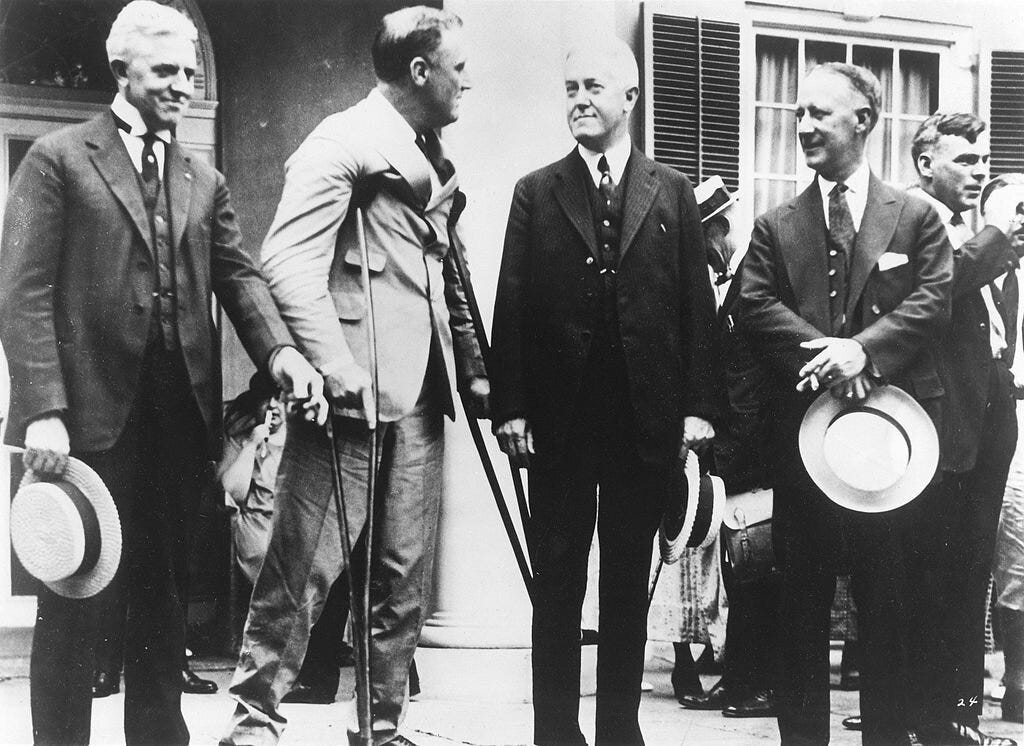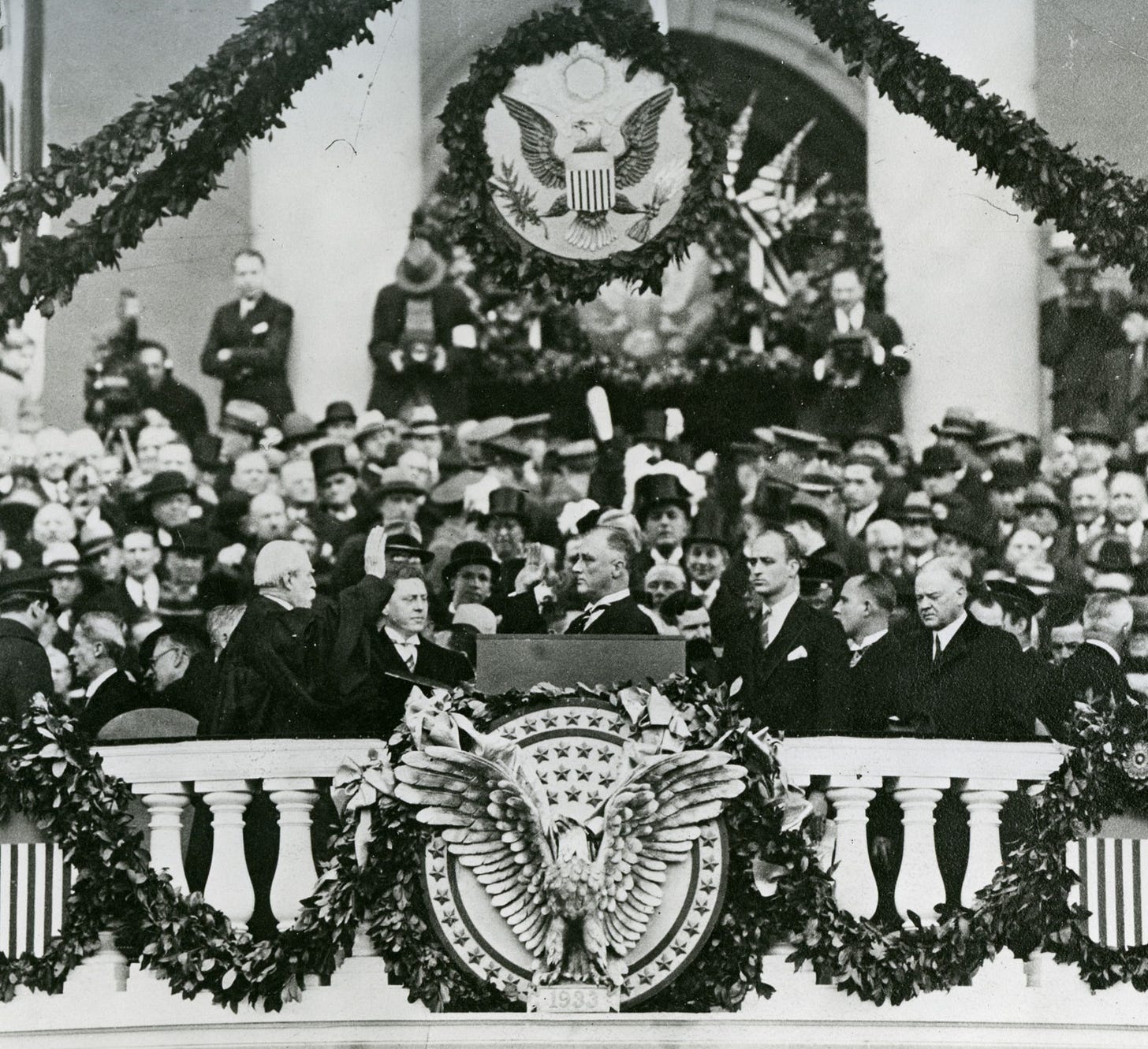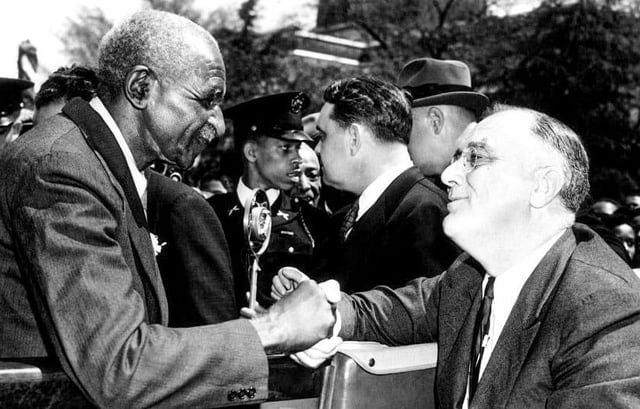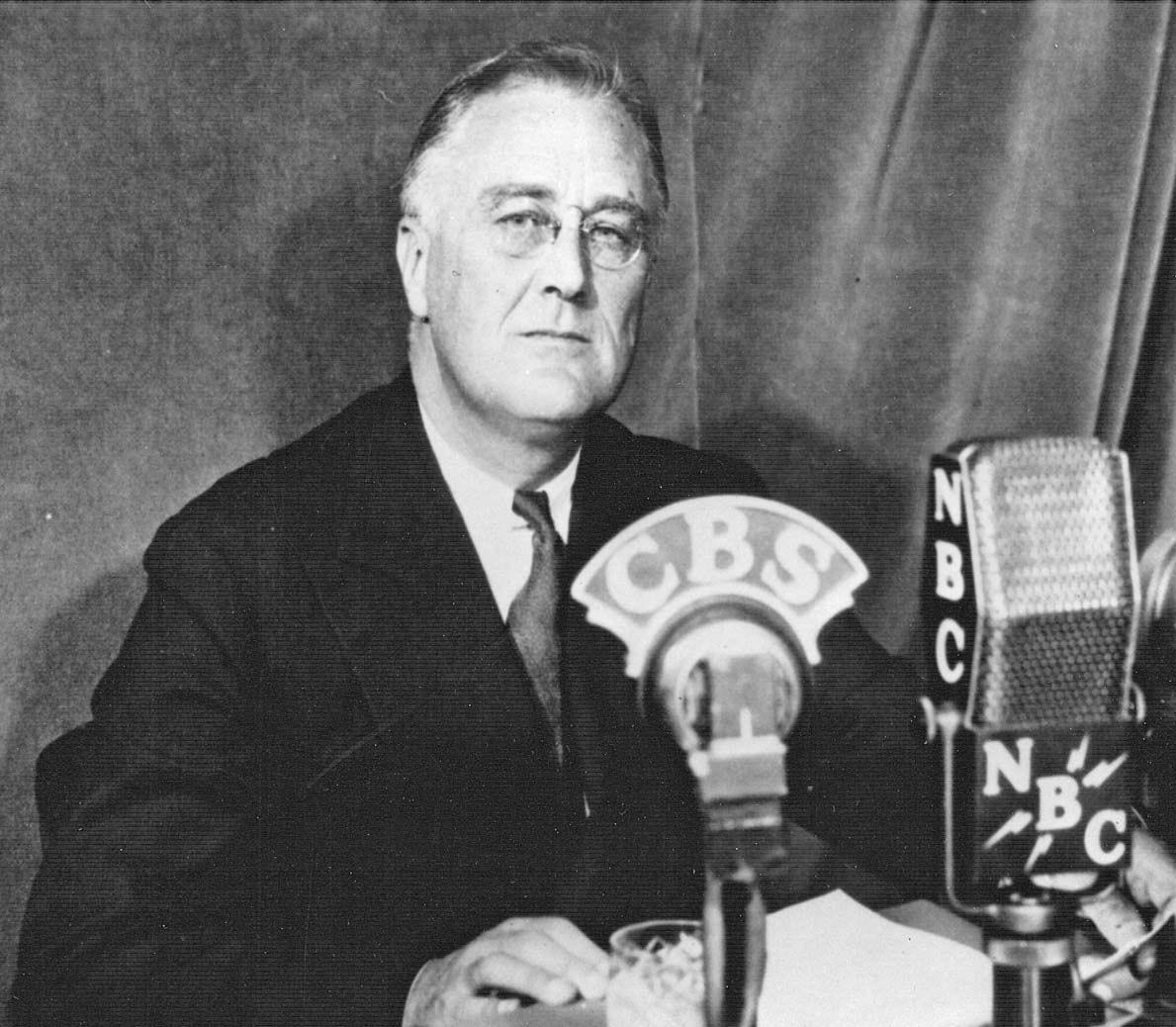Democrats Were Worse Off in 1932. Then They Stopped Playing It Safe
In 1932, the Democrats were relics. Then FDR showed up and built a machine that reshaped American politics for generations.
I’ve been looking to history to make sense of right now. Robert Dallek’s Franklin D. Roosevelt: A Political Life doesn’t just explain the past. It shows a path for Democrats to become the party of real people again.
In his book, Dallek asks: “How did a man who came from so privileged a background become the greatest presidential champion of the country’s needy?”
The last time the Democratic party was transformed was under FDR. He didn’t have the perfect message or biography. But he built something new, moral and national from the wreckage of the chaos that came before.
This piece is about how he did it… and how Democrats can do it again.
Before FDR, the Democrats of the early 20th century weren’t a party in any modern sense. They were a patched-up alliance of groups. They weren’t bound by vision but by habit and resentment of the dominant Republicans.
In the South, the Democrats were a bastion of white supremacy and inherited power. The Northern Democrats leaned on urban machinery, patronage and immigrant voting blocs.
They generally did not get along and barely agreed on anything except one unifying principle: they weren’t Republicans.
This was their attempt at a formula for national power and it failed miserably.
Republicans dominated the White House from 1897 to 1933, with one exception: Woodrow Wilson.
The party had no north star, no economic theory, no national message and no way to respond to the Great Depression. They were stuck in the mindset of being the minority party.
Dallek makes it clear: by 1932, FDR wasn’t inheriting a coherent political movement. He was stepping into a vacuum. The Democrats were fractured, stale and running on fumes.
FDR didn’t pivot, soften or spin. He tore it down and rebuilt it from scratch.
And he was initially underestimated. As Robert Dallek writes, “Many people regarded Roosevelt as more a man of good intentions and affability than a strong leader.” Even some Democrats doubted he had the depth or backbone for the times. Republicans didn’t see a threat.
He was still finding his footing, literally and politically, after years in polio recovery. The fact that he couldn’t walk without an aide led many elites to dismiss him.
Washington expected caution. He gave them whiplash.
The issue wasn’t messaging. It was substance. The party had no reason to exist beyond not being Republicans. FDR knew this had to change or they were toast.
In his first inaugural address, he did what most Democrats had avoided: he called out the villains.
This wasn’t triangulation. FDR named the enemy. He didn’t treat the Depression like an unlucky downturn. He blamed the nefarious bankers and moguls who caused it.
He told the country: This isn’t repair work. This is a reinvention.
FDR’s new coalition was made up of farmers, factory workers, immigrants, shop keepers… rural and urban. Black voters in the North and white segregationists in the South.
This wasn’t a coalition built on agreement. It was built on action (real programs that mattered).
He initiated New Deal programs like the WPA and CCC. They brought jobs and dignity to the forgotten.
But all this came at a cost. Southern Democrats carved out ways to exclude Black Americans. As Dallek notes, FDR allowed this to happen to keep the legislation alive. A strategic decision… and a serious moral failure.
Still, the gains sparked a gradual but real political shift. Millions of Black voters started leaving the party of Lincoln. The realignment had begun.
FDR didn’t kick the racists out. He sidelined them by making the party bigger than them.
FDR always knew what the American people needed to hear. His fireside chats didn’t just explain policy. They made people feel seen.
He spoke plainly. He didn’t overexplain. He made people feel like they weren’t alone.
In the middle of a banking panic, he didn’t go into the minutiae of capital reserves. He said: Trust me. Trust each other. And people did.
FDR understood something that most politicians missed and still miss today.
Politics is about picking a side. He didn’t shy away from conflict… he embraced it.
When Wall Street and corporate leaders turned against him, he didn’t flinch and used it to define his persona.
In his 1936 MSG speech, FDR called them economic royalists who wanted to strangle opportunity and kill democracy.
This wasn’t political theater. It was proof. He knew this fight showed people exactly whose side he was on.
This is when his movement took real form. FDR knew that coalitions aren’t built by smoothing over differences. They’re built by making the mission big enough, and urgent enough, to fight for.
Today’s Democrats aren’t facing a Depression, but there’s a similar void. Who are Democrats fighting for? What’s the point of this party right now?
No white paper, microtargeting or managed messaging is going to solve this. Tech monopolies are today’s concentrated power and they’re running unchecked.
FDR named the villain: greed. And made the promise: I will fight for you.
Today, the new barons aren’t on Wall Street anymore. They’re in Silicon Valley.
Mark Zuckerberg. Elon Musk. Jeff Bezos. Sergey Brin and Larry Page.
Their platforms decide what we see, say, hear and feel. Their wealth and power dwarf anything the old robber barons ever imagined.
And they answer to no one. Democrats can’t whisper this. They need to shout it. Repeatedly. Together.
The parallel isn’t perfect. But here’s how the fight shifts:
Then
Foe: Wall Street greed
Tool: Fireside Chats (radio)
Coalition: Americans battered by economic collapse, united by urgency. Not ideology
Win: New Deal programs (WPA, CCC)
Now
Foe: Silicon Valley power (data monopolies, algorithmic control)
Tool: Digital omnipresence (video, podcasts, social platforms, community spaces)
Coalition: Americans disillusioned by concentrated power, united by purpose. Not purity
Win: Antitrust reform, digital rights, platform accountability
FDR didn’t play it safe with his voice. He didn’t chase headlines. He made them.
In the fractured media ecosystem we live in, Democrats can’t rely on the occasional scripted interview and hope something goes viral. That “spray and pray” approach doesn’t work.
New leaders need to be omnipresent. Short-form on TikTok, longform on vod/podcasts, digital and analog. The podium is everywhere now.
Coalitions aren’t built with clean messaging. They’re built with risk.
FDR didn’t iron out every disagreement inside the party. He embraced the friction and made the mission, the north star, more essential than any single issue.
This is the move for Democrats now. They need to build a party where the tent opens wide. Not because they agree on every issue. Because they share the same fight.
That means making room for people who might be politically inconvenient. It’s time to not rule out rural voters, faith-driven Democrats and pro-life voices.
FDR’s realignment worked because he was clear, bold and unapologetic. He picked fights. He never flinched.
FDR didn’t restore faith in institutions. He remade them. He didn’t manage decline — he brought America back from the brink and forced a new deal. Literally and politically.
The party that once remade America can do it again… if it stops managing decline and starts forcing a realignment.
If you enjoyed this newsletter, please share with your friends.
Who should Democrats confront today? Drop your takes below.








Excellent article. Excellent writing. Makes me think JB Pritzker maybe the next dem leader. He has what it takes and most like FDR including from a privileged background, trans generational trauma, empathy, sensible, not afraid to fight, and he communicates well. 👊🙏🩵💚❤️🩵💚❤️
Who is the next great leader of the Democratic Party?